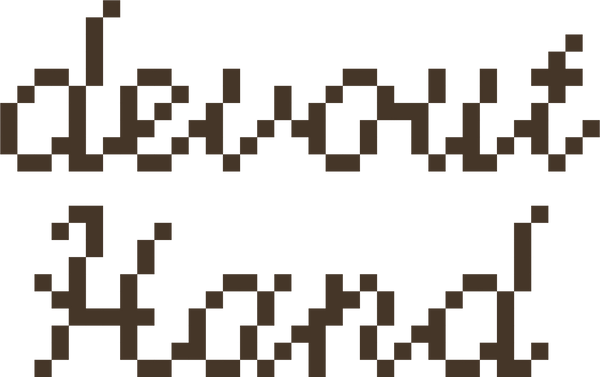Tapestry crochet: switching colours seamlessly
Elliyah DysonWanting to learn a new skill? Tapestry crochet is a great way to create colourful textiles and even incorporate your own unique designs into pieces. One of the key techniques in mastering this art is seamless colour switching. In this guide, we'll delve into the art of switching colours while carrying through the non-active yarn, allowing you to create flawless transitions in your tapestry crochet projects.
Looking for a complete beginners guide to tapestry crochet? Check out this one I wrote.
Understanding Tapestry Crochet: the Basics
Tapestry crochet is a technique that involves working with multiple colours of yarn in the same row or round to create detailed patterns. Unlike traditional crochet, where each colour change typically starts and ends with a new strand of yarn, tapestry crochet involves carrying the non-active yarn along the backside or through the work while you work with the active colour. Once you’ve gotten a hang of the technique, you’ll be able to change colours seamlessly, work with any pixel chart you come across, and even be able to create your own graph patterns.
Here, we'll take a look at how to carry through your yarn to ensure both sides of your project will look good. This method creates a dense fabric with minimal gaps between colour changes, resulting in a clean and polished finish.
Seamless Colour Switching Technique
Now, let's explore the step-by-step process of switching colours seamlessly in tapestry crochet. To do so, we'll follow the simple graph chart below (which you might recognise as the body of the sausage dog scarf). For the instructions below, we'll be following the first row of the chart from right to left.

Step 1: Start with the First Colour
Begin your project with the first colour (light yellow in this case), and work the specified number of stitches according to your pattern. Stop crocheting once you've reached the last active colour stitch (here's, it's the 11th stitch).


Step 2: Start the Final First Colour Stitch
When it's time to switch colours, complete the final stitch of the first colour as follows: insert your hook into the final stitch, make sure your new colour (blue in this case) is on top of your hook, yarn over your first colour and pull through.




Step 3: Incorporate the New Colour
With the two loops still on the hook, yarn over with the new colour and pull through the loops to complete the stitch. This effectively joins the new colour to your work.

Step 4: Carry the Non-active Yarn
As you work with the new colour, carry the non-active yarn through your stitches.


Step 5: Changing Back to the First Colour
Once you've finished your new colour stitches, change back to your first colour. Before you do so, lightly tug your old colour to prevent gaps but avoid pulling too tightly, as it'll distort your work. Insert your hook through the final new colour stitch, pull through, then pull the old colour through the two remaining loops on your hook.



Step 6: Finishing the Row
If the new colour isn't needed in the rest of the row according to the graph pattern, you can drop it towards yourself and continue crocheting until the end of the row. When you continue with the next row, you can pick the new colour up at the same stitch you left it.


Step 7: Alternate Colours
Continue alternating between the active and non-active colours as indicated by your pattern. Remember to carry the non-active yarn consistently along the back of the work to maintain tension and produce clean colour changes.
Step 8: Finishing Touches
Once you've completed your project, weave in any loose ends using a tapestry needle to secure them neatly. Trim any excess yarn for a clean finish.
Tips for Success
- Practice Tension Control: Achieving consistent tension is key to producing even stitches and seamless colour changes. Experiment with different tension levels until you find what works best for you.
- Keep Yarn Skeins Neat: To prevent tangling and confusion, keep your yarn skeins organized and tidy as you work. This makes it easier to manage multiple colours and reduces the risk of knots.
- Be Patient: Mastering tapestry crochet takes time and practice, so don't be discouraged if your first attempts aren't perfect!
The yarn I used for this tutorial (and for most of my patterns) is DROPS Paris. DROPS is an international brand which is available almost everywhere. It has some great quality yarns (this one is 100% cotton) and it's pretty affordable, so if you're practicing crochet, I'd definitely recommend it. If you're based in the Netherlands, you can easily order it via Breiwebshop.
